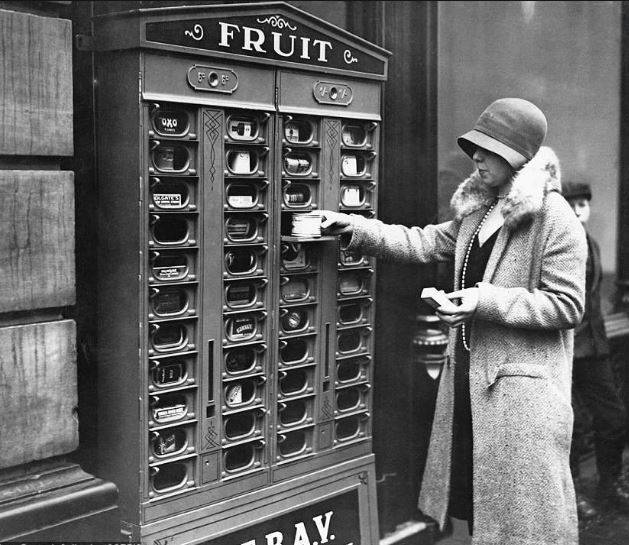The History of Vending Machines
Currently, the vending machine industry alone creates several billion in revenue each year. Today, we install vending machines in our offices, schools, hotels and restaurants, as well as at events and festivals, after making a purchase or opting for vending machine hire.
Surprisingly, the history of vending machines can be traced back to ancient times. If you are wondering how the very first vending machine was invented and has since evolved over the years, continue reading.
First Century
The earliest vending machine was invented by a man named Hero Alexandria in the first century. Hero Alexandria, a Greek engineer and mathematician, created a machine that accepted a coin, before dispensing holy water. At the temples where citizens worshipped, this device ensured that people were not taking more than their fair share of holy water.
When users inserted the coin into the machine, it would land on the pan which was connected to a lever. The weight of the coin on the pan would be heavy enough to pull on the lever, enabling the valve to open and flow holy water. The pan continued to slant until the mass of the coin would drop. When the coin had completely fallen off the pan, the lever retracted, and the valve would close.
18th Century
It wasn’t until the early 1880s when society embraced Hero Alexandria’s ingenious invention. In 1822, an English bookseller named Richard Carlile came up with a newspaper dispensing machine. In 1867, Simeon Denham won the British Patent no. 706 for creating the first fully-automatic vending machine, dispensing stamps.
In 1883, Percival Everett was the first man to introduce a modernised vending machine, which dispensed postcards. His vending machine became very popular and was soon after installed at railway stations and post offices. Percival Everett’s vending machines were able to offer customers notepaper, envelopes and postcards.
In 1888, Thomas Adams was the first person to build a vending machine that dispensed chewing gum. The gum, named Tutti-Frutti, was available around New York City subway stations.
In 1893, a German chocolate manufacturer called Stollwerck sold their chocolate via 15,000 vending machines. Besides chocolate, their other vending machines sold chewing gum, cigarettes, matches and soap products.
19th Century
Beverage machines that dispensed soft drinks into cups were devised in the early 1900s. This idea flourished a few decades after, whereby vending machines started offering bottled drinks to their customers. Coca-Cola was the first company to sell their bottled drinks through vending machines.
In 1946, coffee vendors were developed, followed by refrigerated sandwich vendors in 1950. Several decades later, in 1984, Automatic Products International Ltd. introduced a vending machine which could ground coffee beans and produce fresh brew.
20th Century – Present Day
Nowadays, we have a wide range of vending machines which are able to dispense all manner of things, including; snacks, fresh food, hot and cold beverages, electrical items and more. Vending machines are found all across the world in various commercial and non-commercial environments.
Back in the day, vending machines would only accept coins, as it was easier to identify counterfeit coins than notes. Older vending machines would often take counterfeit notes because they could be easily imitated to look like the real deal. Today, vending machines are advanced enough to be able to recognise real coins, notes and give the right amount of change when the user makes the payment.
The technology can compare physical characteristics, such as the diameter, thickness and the number of ridges on the edge, to detect and verify coins. Newer, advanced vending machines can determine the chemical composition of coins and use optical scanning to identify notes. Some vending machines have miniature digital cameras which scan images of the notes and verify whether the real currency was inserted, by looking for specific patterns. Other vending machines use an ultraviolet scanner to authenticate real notes by measuring the amount of glow that’s emitted. As genuine notes contain fluorescent ink, it will glow when ultraviolet light shines on it. Also, many vending machines use a magnetic reader to authenticate the notes because real bills are printed using magnetic ink.
As we now live in a digitalised environment, vending machines are continuously getting smarter and smarter. Companies have successfully implemented credit card readers, as it is rare to find people carrying a lot of cash on them these days. The rise of Apple Pay, Android Pay, and other mobile payment options make customers more inclined to make a purchase, as well as helping vending companies boost their sales.
